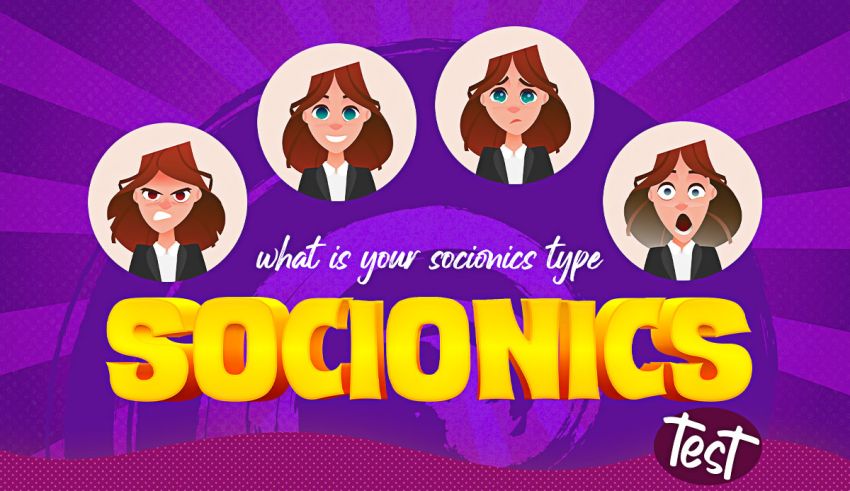
Socionics Test Explained
It’s a 20-question self-report test that uses identity, duality, activation, and mirror to identify your Socionics type.
Similar to the Enneagram Test, the goal is to categorize your character. But the difference is that the focus is on your cognitive functions and information digestion/learning.
Socionics is a personality categorization theory based on eight information types: Introverted Logic (Ti), Extroverted Intuition (Ne), Introverted Ethics (Fi), Extroverted Sensing (Se), Extroverted Ethics (Fe), Introverted Sensing (Si), Extroverted Logic (Te), and Introverted Intuition (Ni).
It combines Carl Jung’s work with a new view on cognitive functions, values, and behaviors.
See what Quadra you belong in
In the Aušra Augustinavičiūtė’s work, the Socionic types are divided into four main groups called Quadra. Each of these groups consists of two dual pairs and contains the same four intertype relations. Our Socionics test helps you figure out which of the categories you belong in and why.
| Quadra | Socionics |
| Alpha | ILE, SEI, ESE, LII |
| Beta | EIE, LSI, SLE, IEI |
| Gamma | SEE, ILI, LIE, ESI |
| Delta | LSE, EII, IEE, SLI |
Discover your type
Similar to the MBTI test, Socionics have 16 personality types:
- ESTj
- ENTj
- ESFj
- ENFj
- ESTp
- ESFp
- ENTp
- ENFp
- ISTp
- INTp
- ISFp
- INFp
- ISTj
- ISFj
- INTj
- INFj
The Socionics test helps you find your type and understand why it’s a perfect match.
Review your relationships
The Socionic theory offers a detailed table of interrelationships between the sixteen types. And it covers all possible combinations. The test allows you to discover what type of relationship is best for you based on your interests and functions.
Most individuals prefer the Duality relationship, consisting of 1) close psychological distance and 2) Ease of interaction. But other communication styles and relationships have their unique benefits as well.
Understand your social role
Each Socionic has its own social role that defines its interaction with society. The good thing about the test is that it determines your position based on your responses. So, you don’t have to participate in a different questionnaire for that.
The most common roles are Pragmatics, researchers, social, and humanists.
How Does the Socionics Test Differ from MBTI?
Many suggest that the 16 Socionic types are the same as the Myers-Briggs Type Indicator. And they are not incorrect. However, the two personality theories have different approaches to categorizing people.
Cognitive functions: Socionics theory suggests that we use all of our cognitive functions in various portions. However, MBTI is based on the Jungian view that we have primary functions.
Values and behaviors: In the Socionics theory, individuals’ understanding of the surrounding world is perceptual, value-influence, and behavioral. And behaviors are considered to be a by-product of functions. Whereas in the MBTI model, individuals are believed to value things differently because of their unmatching temperaments.
Easy Ways to Find Your Socionics Types
It could be confusing when you have questions like, “What is my Socionic type?” That’s because the theory is mathematical and hence complicated. An average person might not be able to find their type on their own. But there are simple ways that could at least help you identify your Quadra and get closer to discovering your actual personality type.
#1: The Reinin traits.
According to wWkisocion, “Reinin dichotomies or Reinin traits refer to 15 type dichotomies that divide the Socion into symmetrical halves.” By matching your behaviors to three of these traits, you can find out your Socionic type.
| Socionics Quadra | The Reinin Traits |
| Alpha | Judicious, Merry, and Democratic |
| Beta | Decisive, Merry, and Aristocratic |
| Gamma | Decisive, Serious, and Democratic |
| Delta | Judicious, Serious, and Aristocratic |
#2: Analyzing your group behaviors.
The original Socionics theory suggests that the individuals in each Quadra tend to form groups and enjoy each other’s company. However, they exhibit particular behaviors that can help determine their category with reverse engineering when gathered. So, you can review your friends’ group and the way you interact with each other to understand your personality type.
Alpha Quadra group behavior: This group’s dominant features are lack of focus on a particular topic and spontaneity. They enjoy activities for fun and don’t really engage in serious ones.
Beta Quadra group behavior: Loudness, loyalty, and rituals matter in this category. Beta individuals value their traditions and are distinguished by their hearty laughter.
Gamma Quadra group behavior: Exchanging jokes on materialistic topics like money and sex is a way of communication for Gammas. They prefer to spend their time planning productive activities. And they often tend to keep their circle as small as possible.
Delta Quadra group behavior: Discussing people’s life decisions and exchanging interesting facts are common among the individuals in this category. Deltas prefer to spend their time with people that could bring value to their lives. Plus, they don’t enjoy the company of too many people simultaneously.
#3: Reviewing your romance style.
If you don’t want to take a Socionics test, romance analysis is your alternative for discovering your personality type. Each Quadra goes through specific love experiences that distinguish them from the rest.
| Socionics Type | Romance Style |
| Alpha | Avoiding conflicts |
| Beta | Intense exchanges of emotions |
| Gamma | Exchanges of information |
| Delta | Spending time together on fun activities |
#4: Taking an online quiz.
The 2022 Socionics test on this page covers all the mentioned aspects to discover your type. It’s actually the most convenient way to analyze your personality and see how it compares to the four Quadra.
All you have to do is answer 20 questions which take less than 5 minutes of your time.
Disclaimer
QuizExpo is not associated with any of the names/organizations mentioned in the Socionics test. It’s an independent questionnaire inspired by the work of Aušra Augustinavičiūtė.































